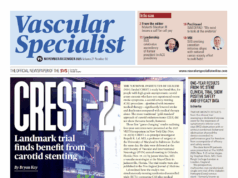Everyone gets sick, but not everyone expresses how they are feeling in the same way. Some patients may not feel comfortable speaking about a particular symptom due to perceived embarrassment. However, other factors may also influence what, or how, a patient shares what they are feeling. In my experience shadowing doctors, I have seen an abundance of patient interviews, none of which are identical. I am, however, beginning to notice trends, in particular, pertaining to the patient’s ethnic background.
For example, I have witnessed a check-up where the patient was a non-English speaking Chinese woman. Her husband was present in the room as the doctor asked about how the patient was feeling. Instead of the patient answering directly, answers were provided by the husband; the patient herself barely even spoke. The woman simply sat in the exam chair, lips tightly sealed, as she stared at her husband speaking with the physician. Rarely did the patient maintain eye contact with anyone. Unfortunately, the doctor had no real way of knowing whether or not the husband was conveying all of the necessary details that the patient wished to convey. It is exactly this type of behavior that all doctors must become aware of.
There are certain cultural nuances in communication that exist and must be taken into account when communicating with patients. Doctors must be aware that they may be involved in the childhood game of “telephone” if the patient does not speak for him or herself. Details regarding treatment and results of treatment must be conveyed in a clear and concise manner so that the right information is shared between physician and patient.
One technique to navigate this issue includes asking direct, specific questions regarding the location, date or onset and severity of the symptoms. Sometimes asking to point with a finger at the specific site of the pain can get the patient more directly involved. Questioning the degree of pain using a pain score (1-10) can also be helpful. Directing the questions while maintaining eye contact with the patient can also illicit more patient involvement.
In a vastly diverse world, there lies a necessity to probe the idea of being culturally competent in healthcare. Physicians must make a conscious effort to truly understand the background of their patients if they wish to provide first-class healthcare.
Mr. Peter Vitale attends Iona College in New Rochelle, NY and shadowed Dr. Anil Hingorani, Past Chair of the SVS Diversity and Inclusion Committee.












